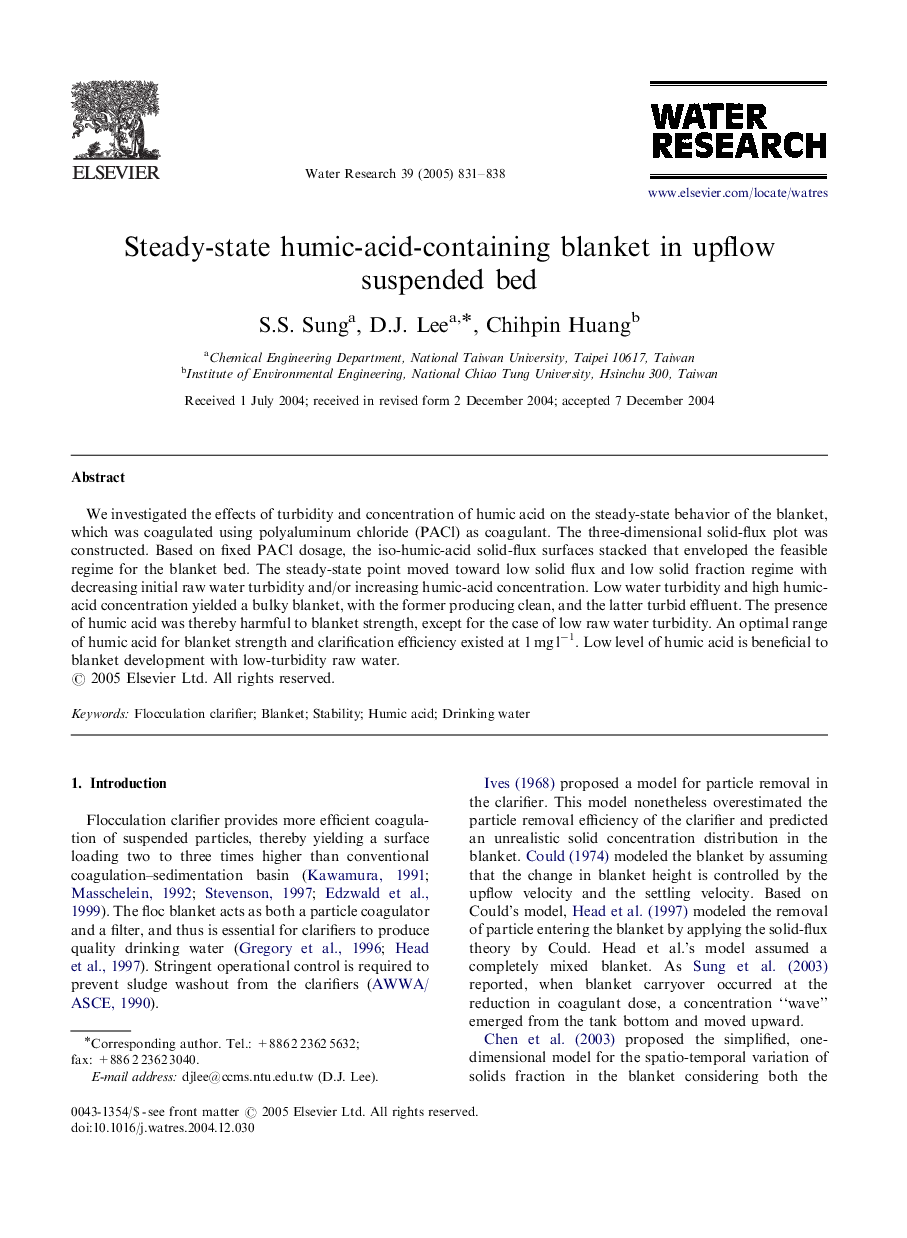| Article ID | Journal | Published Year | Pages | File Type |
|---|---|---|---|---|
| 9468289 | Water Research | 2005 | 8 Pages |
Abstract
We investigated the effects of turbidity and concentration of humic acid on the steady-state behavior of the blanket, which was coagulated using polyaluminum chloride (PACl) as coagulant. The three-dimensional solid-flux plot was constructed. Based on fixed PACl dosage, the iso-humic-acid solid-flux surfaces stacked that enveloped the feasible regime for the blanket bed. The steady-state point moved toward low solid flux and low solid fraction regime with decreasing initial raw water turbidity and/or increasing humic-acid concentration. Low water turbidity and high humic-acid concentration yielded a bulky blanket, with the former producing clean, and the latter turbid effluent. The presence of humic acid was thereby harmful to blanket strength, except for the case of low raw water turbidity. An optimal range of humic acid for blanket strength and clarification efficiency existed at 1 mg lâ1. Low level of humic acid is beneficial to blanket development with low-turbidity raw water.
Related Topics
Physical Sciences and Engineering
Earth and Planetary Sciences
Earth-Surface Processes
Authors
S.S. Sung, D.J. Lee, Chihpin Huang,
